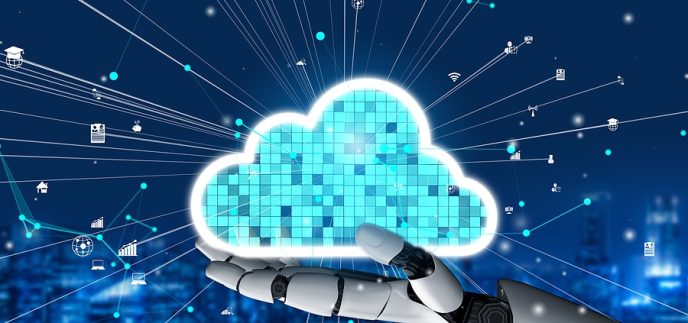Is RPA a Form of AI? How Robotic Process Automation and Artificial Intelligence Work Hand in Hand
18th August 2023 | By Andy Morley
In the world of automation, there are two terms that are often used interchangeably, RPA and AI. While they may sound similar, these technologies have distinct differences. RPA stands for Robotic Process Automation, which uses software robots or “bots” to automate repetitive tasks. AI, on the other hand, refers to artificial intelligence, a technology that aims to mimic human intelligence.
There are a number of differences between RPA and AI, but these technologies can be used together. There are, however, numerous challenges businesses face when implementing RPA and AI getting started with these technologies.
Jump to:
- What is RPA?
- How does RPA work?
- How is RPA Different from AI?
- How are RPA and AI used together?
- Industries that Can Benefit from RPA and AI
- Real World Examples of Global Companies Using RPA and AI
- Challenges to Implementing RPA and AI
- How to Get Started with RPA and AI
What is RPA?
RPA is a technology that automates repetitive, rule-based tasks. This can range from copying and pasting data into spreadsheets to filling out forms. RPA is typically used for back-office operations, such as in finance and accounting, human resources and supply chain management.
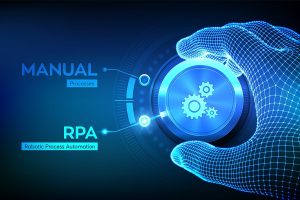
These tasks can be as simple as copy-pasting data from one spreadsheet to another, or as complex as processing transactions, dealing with data manipulation, triggering responses and communicating with other digital systems. In essence, if there’s a high-volume, business-rules-driven, repeatable process performed by humans, it can probably be automated by RPA.
How does RPA work?
RPA automates processes by using said bots that can complete tasks in the same way a human would. This means that the bots can interact with different systems and applications to complete a task. RPA uses “scripts,” which are sets of instructions that tell the bots what to do. These scripts can either be created by the user or generated by the RPA software.
They can also be programmed to learn how to perform tasks more efficiently over time. Akin to a virtual worker, they interact with systems and applications by using the user interface in the same way a human would. Some RPA systems also use machine learning algorithms to enable bots to learn and improve over time.
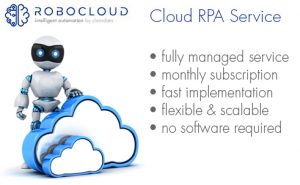
These bots can autonomously learn how to perform tasks more efficiently by analysing the results of their previous actions and refining their approaches. They can also adapt to changing circumstances without the need for human intervention, making them a valuable tool for continuous process improvement.
One of the most powerful features of RPA is its ability to integrate with various applications and systems. Regardless of the underlying technology, RPA bots can work across several applications simultaneously, just like a human user would be able to.
This ability to work in parallel across multiple systems, coupled with their 24/7 operational capacity, allows them to process vast volumes of data and tasks at an unprecedented speed and accuracy, thereby boosting productivity and reducing operational costs.
However, it’s important to understand that while RPA can automate tasks that are rule-based and repetitive, it lacks the cognitive capabilities to understand context or make decisions, unlike its AI counterparts. But when combined with AI, RPA can unlock even greater potential, creating a synergy where RPA handles repetitive tasks and AI provides decision-making capabilities.
Robocloud are leading providers of Robotic Process Automation services – get in touch with us today for more
Quick Contact Page
How is RPA different from AI?
While RPA focuses on automating tasks, AI is designed to mimic human intelligence. AI-based systems can learn and adapt based on the data they are given. For instance, AI can be used to recognise patterns in data to make predictions or decisions.
Strictly speaking, RPA cannot perform such tasks since it is limited to automating tasks based on rules. While RPA and AI are both used for automation, they are designed to perform different types of tasks.
RPA and AI, despite often being used in conjunction with one another, are not interchangeable and serve unique purposes in the realm of automation technologies. RPA is primarily designed to automate routine, rule-based tasks that require no decision-making or cognitive abilities.
Its main function is to mimic the actions of a human user, following a predefined sequence of steps to perform tasks such as data entry, form filling and file moving. The strength of RPA lies in its ability to perform these tasks quickly, accurately and tirelessly, thereby enhancing productivity and reducing the risk of human error.
On the other hand, AI is a broader concept that encompasses the simulation of human intelligence processes by machines. Unlike RPA, AI is designed to learn, adapt and even make decisions based on the data it processes. This involves complex capabilities, such as natural language processing, speech recognition and machine learning.
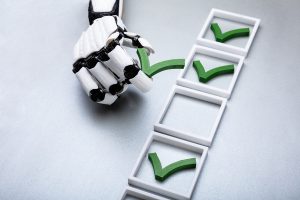
For instance, AI can analyse patterns in large volumes of data, draw insights from them and make predictive or prescriptive decisions. It can also understand and respond to natural language queries, or even recognise images and objects. These are tasks far beyond the scope of RPA.
In essence, while RPA is excellent for automating repetitive tasks, AI is geared towards tasks that require understanding, learning and decision-making. Both have their unique strengths and roles in the automation landscape and, when used together, they can drive significant efficiencies and innovation in business operations.
How are RPA and AI used together?
As already touched upon, RPA and AI can be used together to create a more efficient and effective automation system. For example, an RPA bot could be used to extract data from a source, while an AI system could be used to analyse the data. This would allow businesses to gain insights quickly and accurately. Combining RPA and AI also allows businesses to automate more complex tasks that require both processing streams.
Industries that can benefit from RPA and AI
RPA and AI have applications across many industries. There isn’t really a sector or industry that the two can’t be applied to. There are some sectors which are using the technologies to great potential.
Banking and Finance
In the banking and financial services industry, for example, RPA is used for tasks such as loan processing, account opening and anti-money laundering checks. AI is used for fraud detection, credit assessment and investment analysis.
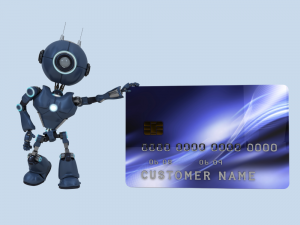
In finance, both RPA and AI have emerged as game-changers, driving efficiency, accuracy and cost-effectiveness. RPA, with its ability to automate repetitive tasks, plays a crucial role in streamlining processes like loan processing and account opening.
It can swiftly carry out tasks such as data entry, document verification and compliance checks, reducing processing time and eliminating human errors. For example, an RPA bot can be programmed to gather necessary documents, verify the information and process a loan application.
This significantly reduces the time taken to complete the process, thereby improving customer experience. Similarly, RPA bots can automate the account opening process by verifying customer documents, inputting data into systems and even communicating with the customer for additional information if required.
On top of this, RPA is immensely useful in carrying out anti-money laundering checks. Given the large volumes of transactions, it’s humanly impossible to manually screen each one for suspicious activity. RPA bots can swiftly sift through these transactions, matching them against various risk parameters and flagging any potential issues for further investigation.
On the other hand, AI, with its cognitive capabilities, plays a pivotal role in areas like fraud detection, credit assessment and investment analysis. AI algorithms can analyse patterns in vast data sets to identify potential fraudulent activities. For instance, unusual patterns of transactions, such as high-value transactions at odd hours, can be flagged by AI systems for further investigation.
AI is also transforming credit assessment processes. By analysing a wide range of data points, including credit history, transaction patterns and even social media behaviour, AI can provide a more accurate assessment of a borrower’s creditworthiness. This not only speeds up the credit decision-making process, but it also helps in reducing the risk of defaults.
In the area of investment analysis, AI’s predictive capabilities are being harnessed for generating investment signals. By analysing historical data and market trends, AI can predict potential price movements, thereby aiding investment decisions. In summary, RPA and AI together are reshaping the banking and financial services industry, making it more efficient, customer-friendly and resilient to risks.
Healthcare
In the healthcare sector, RPA and AI technologies offer a myriad of benefits. RPA can be utilised to automate administrative tasks, such as patient scheduling, billing (in relevant cases) and record maintenance, which traditionally consume significant time and resources. This automation not only enhances efficiency, but it also reduces the potential for human errors, ensuring accurate and reliable data management.

AI, meanwhile, is revolutionising healthcare with capabilities, such as predictive diagnostics and personalised treatment plans. By analysing vast datasets, AI can detect patterns and make predictions that assist medical professionals in early diagnosis and intervention. It can also tailor treatment plans to individual patients based on their unique genetic makeup and medical history, thereby enhancing the efficacy of treatments and improving patient outcomes.
Retail
In the retail industry, both RPA and AI are transforming operations and customer experiences. RPA can streamline processes, such as inventory management, order processing and customer service, reducing operational costs and improving efficiency.

AI, on the other hand, is enhancing customer experiences through personalised recommendations based on past purchases and browsing behaviours. It can also predict future trends, enabling retailers to make informed decisions regarding stock management and marketing strategies.
RPA and AI have significant potential across a diverse array of industries, from banking and financial services to healthcare and retail. By automating routine tasks and providing intelligent insights, these technologies are driving operational efficiencies, improving customer experiences and shaping the future of business operations.
Education
The integration of AI and RPA in the education sector can automate administrative tasks, such as student enrolment and grade recording. For instance, RPA bots can extract student information from enrolment applications and enter this data into the institution’s database. Meanwhile, AI can analyse student performance data to predict future performance and identify students who may need extra support.
Manufacturing
RPA and AI can revolutionise the manufacturing process. RPA can automate important tasks, such as order processing and inventory management, saving time and reducing errors. Meanwhile, AI can enable predictive maintenance by analysing data from machinery to predict potential breakdowns before they occur, drastically reducing downtime.
Travel and Hospitality
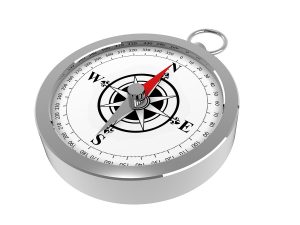
The combination of AI and RPA for travel and tourism can enhance customer experience and streamline operational processes. For instance, RPA can automate processes, such as booking confirmations, cancellations and refund processing. Concurrently, AI can be used to provide personalised travel recommendations to customers based on their preferences and past behaviour. There is more or less no end to the abilities of RPA and AI for processes involved.
Real World Examples of Global Companies Using RPA and AI
A whole host of globally recognised businesses are using RPA and AI in their everyday operations. Across a number of sectors and industries, some of the biggest brands in the world are taking advantage.
IBM
IBM, a globally recognised technology company, extensively uses RPA and AI together, especially in their Watson platform. Watson pairs AI and RPA to automate and optimise processes, delivering efficiencies that can be scaled across the business.
For instance, IBM Watson Assistant, an AI product, is used to automate the customer service experience, capable of handling common customer inquiries without human interaction. When paired with RPA, Watson Assistant can not only interact with customers but also complete tasks such as updating customer information in backend systems.
Amazon
Another example is Amazon, the world’s largest e-commerce platform. Amazon leverages AI and RPA in its operations to enhance the customer shopping experience and optimise its supply chain. Amazon’s AI algorithms provide personalised product recommendations based on customers’ browsing and purchasing history. At the same time, RPA is used in inventory management, automatically updating stock levels and triggering reorders when necessary.
JPMorgan Chase
In the financial sector, JPMorgan Chase, a leading global financial services firm, has innovatively used RPA and AI in its COIN (Contract Intelligence) system. The COIN system uses AI to interpret commercial-loan agreements, which earlier consumed thousands of hours of work each year by lawyers and loan officers. RPA technology is also used for regulatory and compliance checks, which are critical yet time-consuming tasks.
Another compelling example of RPA and AI integration can be seen in the operations of Google, a global technology giant. Google uses a powerful blend of AI and RPA to enhance its search engine capabilities and automate complex data analysis tasks.
Google’s AI algorithms, such as RankBrain, use machine learning to understand the context and user intent behind search queries, therefore delivering more accurate and useful search results. At the same time, RPA is used to scrape, compile and analyse large volumes of data from various sources, automating tasks that would otherwise be time-consuming and prone to human error.
As well as this, Google’s digital advertising platform, Google Ads, uses AI to optimise ad targeting and bid management, while RPA automates the creation and scheduling of advertisement campaigns. This combination of technologies enables businesses to reach the right audience at the right time, thereby maximising return on advertising spend.
Challenges to implementing RPA and AI
Although RPA and AI are recognised as being able to streamline processes and decision making, as with any technology, there can be potential roadblocks
Legacy Systems
Implementing RPA and AI can be a challenge for businesses, especially if they have legacy systems. Legacy systems can pose significant challenges when attempting to implement advanced technologies such as RPA and AI.
The primary reason is that these older systems were not designed with RPA and AI in mind, and thus may lack the necessary interfaces for RPA bots to interact with, or they might not produce data in a format that AI systems can easily process.
Legacy systems also often exist in silos, making it difficult to automate processes that span multiple different systems. Given the age of some of the older systems, legacy systems may not be able to handle the volume of data processing required by AI algorithms, potentially leading to system overloads or data bottlenecks.
As such, businesses with legacy systems may need to invest in modernising their infrastructure before they can fully leverage the benefits of RPA and AI. Of course, auditing systems would help identify any such needs.
Employee Resistance
Businesses may also face resistance from employees who fear that the technology will replace their jobs.
Employees may be against AI and RPA for several reasons, including the following:
- Fear of job displacement, because AI and RPA are capable of automating routine tasks, workers who perform these tasks might worry about their roles becoming redundant
- Introduction of these technologies could mean that employees have to upskill or reskill to remain relevant, leading to concerns about their ability to adapt to new tools or methodologies
- There may also be a general resistance to change, particularly among employees who are comfortable with existing systems and processes
Cost
As with any business expense, especially those that can be considered on the higher end of the scale, cost is a major factor. The initial investment for AI and RPA technologies can be high, especially for small to medium-sized businesses.
There are a number of expenses to consider across a range of departments and subjects, including the price of software, infrastructure in place or needed and the training required to use these technologies effectively.
To make this even harder, there isn’t really really a single price point for cost associated with the running of RPA and AI. Each company will be unique in their requirements and, as such, a one size fits all approach to these technologies generally isn’t available. This means that even a rough cost can’t be accurately calculated without the assistance of suppliers and providers of any new items or training that might be needed.
Data Privacy
Another challenge comes in the form of data privacy. When implementing AI and RPA, businesses must ensure all automated processes are compliant with data protection regulations. This can be particularly complex when dealing with sensitive data or operating across international borders where regulations may vary.
Inexperienced in-house operations may simply not be aware of how software should approach privacy. RPA as a Service providers, such as Robocloud, implement several measures to ensure data privacy in compliance with various international regulations.
- Employ encryption for all data, both at rest and in transit, to safeguard it from unauthorised access
- Follow the principle of least privilege, granting access rights only to those who require them to perform their duties
- Data masking is another technique commonly used where sensitive information in a database is replaced with fictitious yet realistic data, ensuring the data’s utility while protecting its confidentiality
- Regularly conduct vulnerability assessments and penetration testing to identify and address any potential weaknesses in their systems
- Audit trails also play a critical role, logging each action on the system to provide complete transparency and facilitate any necessary investigations
- Ensure compliance with specific data protection regulations, such as GDPR in the European Union, through features like consent management and right to erasure
Skilled Workforce
A potential lack of skilled workforce can be a significant obstacle. Successful implementation of RPA and AI requires specialised skill sets.
It may be challenging to find employees with the necessary skills to manage and maintain these systems, and training existing staff can be a lengthy process. This can tie into the cost aspect as there will undoubtedly be either a cost associated with training, or a cost associated with hiring additional staff.
While AI and RPA offer significant potential benefits, businesses must navigate these challenges carefully for successful implementation.
How to get started with RPA and AI
Getting started with RPA and AI requires businesses to have a comprehensive understanding of their processes. This means conducting a process analysis to identify the tasks that can be automated.
Once a task has been identified, businesses need to select the right automation tools that fit their needs. Businesses need to build a skilled team that can oversee the implementation of the technology. This team needs to have expertise in areas such as programming, data science and process analysis.
Companies like Robocloud are making the deployment of RPA more accessible by offering it as a service. This effectively eliminates the need for businesses to shoulder the cost of infrastructure, software and the hiring and training of a dedicated team.
Robocloud manages the implementation, maintenance and scalability of the RPA system, allowing businesses to focus on their core activities. We provide expert consultation to identify processes that would benefit from automation and design bespoke RPA solutions to meet the unique needs of each business. By offering RPA as a service, we are empowering businesses to harness the benefits of automation without the associated challenges and costs.
Moving Forward
While RPA and AI may sound similar, they are actually two distinct technologies. Where RPA focuses on automating tasks, AI aims to mimic human intelligence. However, when used together, RPA and AI can create a more efficient and effective automation system. Businesses that are looking to get started with RPA and AI need to have a clear understanding of their processes and the right tools to support them. Despite the challenges that businesses face when implementing RPA and AI, the benefits of these technologies make them worth investing in.


